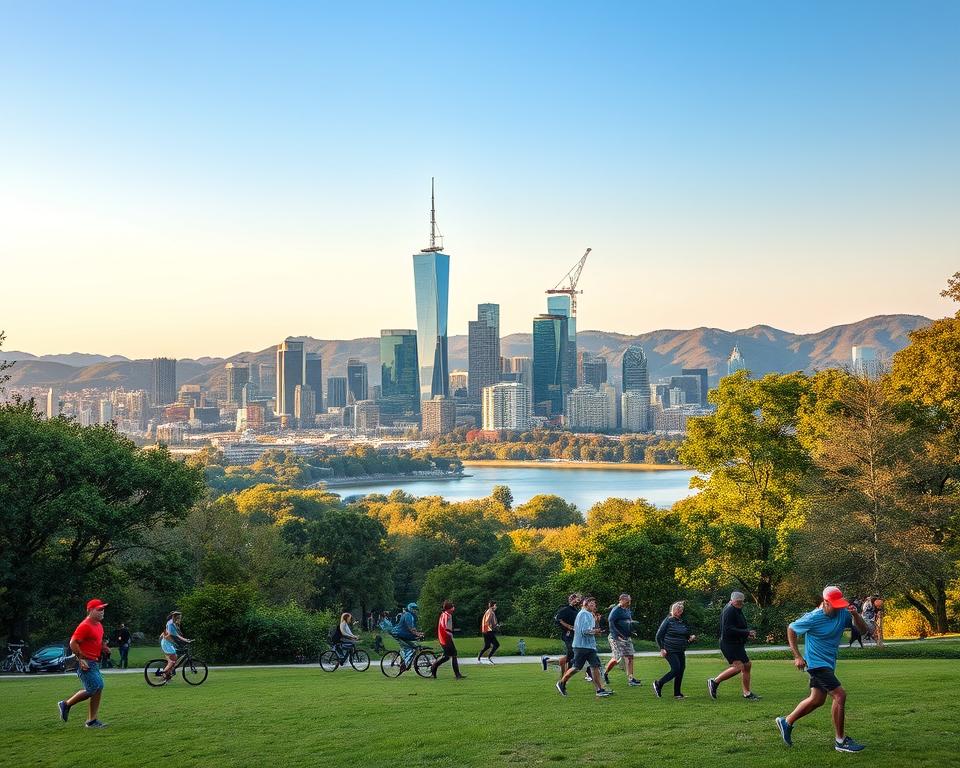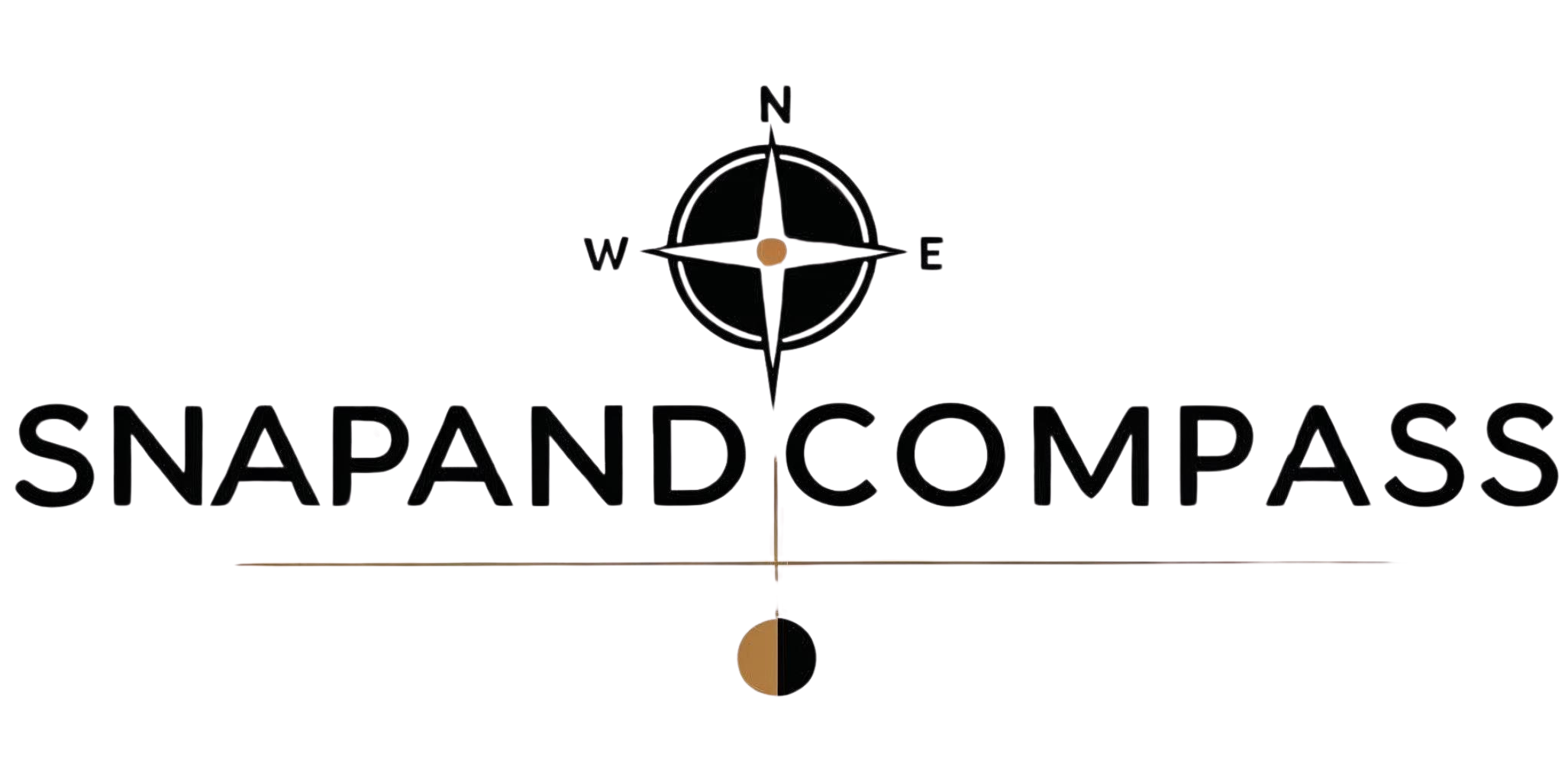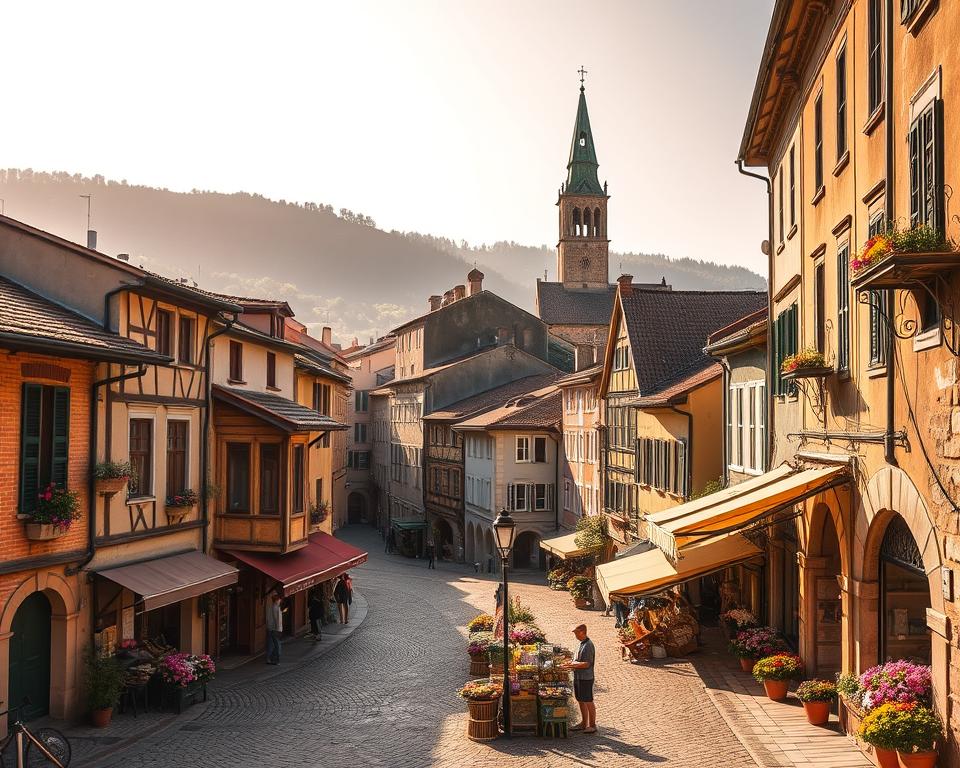Anúncios
city vs nature travel asks a simple question: what setting matches who you are and how you like to spend your time?
Are you drawn to dense culture, food, and fast-paced energy, or do quiet trails and starry skies feel like a better fit? Your comfort with crowds, your favorite activities, and your budget shape the right vacation choice.
Recent years changed how you think about space and health. That makes this comparison more useful now than before. Cities deliver museums, dining, and transit convenience. Nature offers fresh air, lower costs in some cases, and built-in activity that can improve mood and focus.
Think honestly about what you enjoy. Check official sites for closures and bookings. Plan responsibly and choose the option that fits your needs, whether you pick dense streets, wide open places, or a mix of both.
Why city vs nature travel matters right now
How you live day to day now has a big effect on the kind of break you’ll enjoy most. Your routine, stress levels, and local access to services shape whether a short urban stay or a rural reset fits your needs.
Anúncios
Health and mood are part of the choice. Even brief time outdoors lowers stress and improves focus. Cleaner air outside some large metros can ease breathing for certain people.
Markets and logistics changed too. Timed entries, dynamic pricing, and reservation systems now affect parks and marquee museums. Make sure you check official sites for passes, advisories, and ticket windows before you book.
- Your daily routine sets the baseline: if you live in dense cities and use transit, fresh air may feel like a reset.
- If museums and galleries are rare where you live, a short urban vacation can deliver concentrated culture.
- Plan around crowds and pace: packed events can overwhelm. Build buffers so your trip feels restful, not rushed.
Know yourself: Energy of cities vs calm of the countryside
Think about the energy you crave when you step away from work and routine. A quick self-audit helps you match your trip to your current needs. Be honest with your answers; this is about what fits your life today.
Anúncios
Ask: crowds, activities, pace, and comfort with the outdoors
- Do crowds and late nights excite or exhaust you? (crowds)
- Which kinds activities do you prefer: museum days and food walks, or hiking and paddling?
- What are your limits for roughing it—would camping without amenities stress you?
- Are you a night owl or an early riser who loves sunrise time?
Real talk: New York energy vs a quiet national park escape
New York delivers nonstop neighborhoods, art, and food within blocks. That concentrated rhythm suits people who like curated experiences and short walks between points.
In a national park you trade convenience for space, trails, and stargazing. If subway crowds drain you, pick a smaller urban district or a midweek museum slot. If rustic camping sounds stressful, book a cabin in the countryside instead.
Culture, food, and design: What cities deliver
Urban centers pack food, art, and design into compact blocks that let you do a lot in a short time.
Pick hands-on options to learn quickly. Book a food tour or a cooking class for an afternoon. These activities connect you to local people and flavors.
Hands-on experiences: food tours, cooking classes, museums
Reserve timed-entry tickets at major museums to avoid lines and keep your day flexible. CityPASS or local museum cards can cut costs if you plan several stops.
Photography can be tricky in busy galleries. Aim for early or late visits for calmer rooms and better shots.
Urban rhythms: galleries, neighborhoods, architecture
Spend a day tracing neighborhoods through galleries and street art. Walking and transit link many things in one place.
- Look up at historic buildings and new towers; architecture tells local stories.
- Theme your route—design, jazz, or immigrant food—to give the day focus.
- Talk with guides and docents; their context deepens the experience.
- Save splurges for top restaurants and use markets and bakeries to balance your vacation budget.
Be ethical and curious: choose community-led tours, respect exhibit rules, and tip guides when appropriate. That makes your visit both educational and responsible.
Peace, challenge, and wonder: What nature delivers
Outdoors trips fold exercise, calm, and small surprises into a single, easy-to-plan break.
Built-in activity makes a big difference. Trails and waterways turn movement into part of the day, so your vacation also doubles as light fitness. Try a short hike, a paddle, or a beach morning with easy surf to get your heart rate up without forcing a workout plan.
Built-in activity: hiking, kayaking, and trail time
Choose routes that match your energy. Add one small challenge—a longer hike, an early start, or learning basic navigation—to deepen the sense of accomplishment.
Moments you can’t stream: stargazing and Northern Lights
Far from bright lights, a clear night sky often feels like something new. Meteors and dense starfields happen often; auroras can occur in the right seasons and latitudes but are never guaranteed. Enjoy the quiet even if the show doesn’t appear.
Feeling connected: wildlife, rivers, and Mother Nature
Watch wildlife from a respectful distance and never feed animals. Follow river trails for cooler air and steady scenery. Many outdoor experiences are free or low-cost; you trade tickets for planning and time.
- Pack layers and sun protection so weather shifts don’t cut a great trip short.
- Keep binoculars handy and log each day’s highlights to deepen your connection with mother nature.
Costs and value: Where your budget goes in each trip
Understanding common cost drivers helps you pick the option that fits your wallet. Below are practical ways the amount you spend shifts between urban and outdoor breaks, with tips to keep value high.
Cities: accommodation, dining out, ticketed attractions
In most urban breaks your biggest expenses are accommodation, dining, and paid attractions. Compare nightly rates and transit access before you book.
Timed-entry and dynamic pricing are common now; make sure you check official museum and hotel sites for current fees and windows.
Nature: free or low-cost activities, cooking, campground stays
Outdoor options often lower the amount you pay. Trails and beaches are free, and cooking reduces food costs.
Backcountry camping can be free, but gear adds upfront cost. Rent equipment for short trips to save lots of money.
When parks cost more: gateway towns, gear, and peak seasons
Gateway towns sometimes inflate prices due to limited supply in peak seasons. Groceries near parks may cost more, and transport or permits add up.
Smart savings: rentals, off-peak, and mixing destinations
- Rent gear rather than buy for a one-off trip.
- Combine a city night with nearby outdoors to balance value.
- Estimate fuel, parking, and tolls for road trips; compare transit passes vs ride-hails in a city.
- Book early for peak weekends and choose weekdays when possible.
Over the years, dynamic pricing affected both hotels and park towns. Be flexible with dates and check official channels so you aren’t surprised on arrival.
Time available: Weekend city break or short nature reset
A two-day escape rewards simple decisions and one strong focus each day. With limited time, choose rhythm over a long checklist. That reduces stress and gives you real rest.
Fast cultural hits vs slower, restorative days outside
Two days: pick a compact district for museums and food, or drive to the countryside for easy trails and a sunset. Keep drives under three hours so most of your time feels like vacation.
One day: nature can refresh a lot in a single day. Start early, build in a long lunch, and allow time for a nap or slow read.
- For a fast city hit, pick one museum, one neighborhood walk, and one great meal.
- If a beach is near, a sunrise swim or paddle can reset your mind before brunch.
- Book one anchor each day and keep the rest open; flexibility makes short trips feel roomy.
- Arrive at park trailheads before 8 a.m. on weekends for easier parking.
- Check inn minimum stays and buy timed tickets for popular sites to avoid lines.
Crowds, comfort, and sensory load
Crowd size can change a day from energizing to exhausting, so plan with honesty.
First, rate your comfort as a person before you book. Events like Tomatina or Oktoberfest are electric for some and overwhelming for others. Match destinations to your limits so your vacation feels good, not draining.
- Pick time windows: choose early entry or off-hours for museums and meals.
- Bring tools: noise-filtering headphones and simple breathing breaks lower stimulation fast.
- Smaller venues: opt for intimate restaurants or guided tours with fewer people.
- Plan recovery: schedule slow coffee, a quiet bench, or a short forest walk each day.
- Scout alternatives: famous viewpoints fill up; arrive early or try nearby lesser-known spots.
- Agree with others: share preferences and set quiet-break rules so everyone stays balanced.
- Choose lodging wisely: pick a quiet street in an urban area or a spot away from main park arteries.
Nature time often lowers sensory load, supporting focus and better perceived health. If you sense overwhelm, pivot your plan—shorten the day, rest, or switch zones. For extra tips on managing sensory overload, see sensory overload tips.
Activities and pace: Matching your style to place
Match your pace to the place so your days feel energizing, not rushed. Pick activities that fit your mood and the rest you want. That choice shapes each hour of your trip.

Mental and cultural stimulation in cities
For a focused cultural day, plan two main stops. Visit a museum in the morning and a gallery or food tour in the afternoon. That keeps time flexible and leaves room to wander.
Use timed tickets or a multi-site pass. It smooths logistics and frees a block for a surprise find, like a small café or live show.
Physical reset in nature, at your own pace
Pick one anchor outdoors: a short hike, a kayak trip, or a cycling loop. Aim for one strong effort, not many small ones.
Choose trail lengths that match your fitness. Hiking goals beat step counts and help you feel accomplished.
- Choose the kinds activities that fit your mood: exhibitions and performances, or hiking and paddling.
- Set a humane time budget: two major city stops per day or one trail plus a scenic drive outdoors.
- Let the place lead the way: dense streets reward walking; wide-open spaces reward slow drives and lookouts.
- Keep one flexible block each day; surprises often become highlights.
Track energy, not checklists. End the day with a simple ritual—journal, photo sort, or a stretch—to lock in the memory of your vacation.
Wellbeing check: Mood, air, sun, and focus
A short break outdoors can reset your mood and sharpen how you pay attention. Even brief time away from screens helps you relax and return with more focus.
Outdoors and mood: lower stress, better focus
Short bursts outside lift mood. Walks, seats in green spaces, or a riverside pause reduce tension and improve concentration. You don’t need hours—small amounts of time add up.
Air quality: breathing easier outside dense corridors
Rural and mountain air often contains fewer pollutants than big urban corridors. Cleaner air can feel easier on your lungs and support better breathing during active days.
Sun and vitamin D: balance with protection
Sun helps vitamin D production, but balance matters. Get a little direct light, then use shade, sunscreen, a hat, and sunglasses to avoid overexposure.
Tech breaks: fewer pings, more presence
Unplug by default. Silence notifications during walks and set one or two check-ins each day. Fewer interruptions deepen your sense of presence and rest.
- Notice simple sense changes: cool shade, wind over water, and birdsong at dawn.
- Track sleep—many people rest better after time outside on vacation.
- Balance screens with a paper map or a short journal to help your brain process the day.
- Hydrate: the amount you need rises with altitude and heat; drink often.
Quick tip: schedule small green breaks in urban days to reset energy and protect your long-term health.
Photos, wildlife, and those once-in-a-lifetime moments
Some of your most lasting memories are single frames: a skyline at dusk or a fox by a river.
Don’t expect a guarantee. The world decides the show. That uncertainty is part of the charm.
Skyline shots and wide-open landscapes
Shoot skylines at blue hour for glow on buildings. Then chase golden hour for wide-open landscapes.
Start before sunrise in the field or at the beach for soft light and cleaner frames. In cities, scout rooftops and river walks for safe, legal vantage points.
Ethical wildlife viewing in natural habitats
Wildlife is richer in natural habitats than in zoos. Keep animals wild. Use long lenses and give space.
Skip baiting, avoid calls, and follow local rules—some sites restrict drones or close nesting zones.
- Go after something new each outing: a reflection shot or a night-sky sequence.
- Pack rain covers and microfiber cloths. Weather changes a lot outdoors.
- Back up photos daily so you don’t lose irreplaceable experiences.
“Accept variability; often the surprise becomes your favorite image.”
Sample U.S. trip ideas: Cities and nature that pair well
A single trip can deliver a museum morning and a canyon sunset if you plan the route right. Below are concrete pairings and quick logistics so you can pick an option that fits your time and energy.
New York + Hudson Valley or Catskills
Ride Metro-North to Cold Spring or Poughkeepsie for one-day hikes and river views. Rent a car only if you plan to hop towns.
Chicago + Wisconsin or Michigan lake country
Take Amtrak or drive to lake towns. Mix a beach walk, lighthouse stops, and a short forest hike in one day.
Las Vegas + Zion, Bryce, and the Southwest canyons
Use Las Vegas for flights and dining, then drive a scenic loop. Book park entry windows in busy years and expect higher accommodation near gateways.
Seattle + Olympic, Mount Rainier, or North Cascades
Ferry to the peninsula or drive south or north. Check road and weather status before hiking and plan one marquee hike per area.
- Compare accommodation in gateway towns to stretch your budget.
- Build travel buffers for mountain passes and park shuttles; start before 8 a.m. on peak days.
- Pack layers—coastal fog, canyon heat, and alpine chill can appear on the same trip.
- Talk with local people for current trail conditions and food tips.
Final tip: always check official park and transit pages for fees, permits, and alerts before you go on vacation.
Design a hybrid: The best of both worlds
A two-base plan pairs high-energy streets with quiet trails so you get both stimulation and rest. This simple pattern delivers culture, food, and a real chance to recharge.
Two-base itineraries: urban energy, nature recovery
Pick two bases within a half-day’s travel: a lively city place first, then a calm nature hub for recovery. Start with food, museums, or shows and finish with trails, sunsets, or stargazing.
Logistics: transport, accommodation, and time blocks
Choose trains to regional towns, then rent a car for park access. Lock accommodation near transit in the urban base and close to an early trailhead outdoors.
- Block your time: culture and food up front, trails and sunsets at hand.
- Cap drives at four hours to respect your limits.
- Use luggage storage or lockers to move between stays smoothly.
Responsible choices: Leave No Trace and local culture
Respect local customs and tip fairly. Follow Leave No Trace on trails and pack a small safety kit: water filter, headlamp, and layers.
“Balance gives you variety without burnout.”
End with a flexible evening back in town or at an airport hotel so departure day feels calm and easy.
Conclusion
Your perfect break depends more on how you want to feel afterward than on any single checklist. Choose the way that helps you breathe, notice, and connect—whether that means lively streets or wide horizons.
Plan responsibly: check official sources for permits, passes, and closures. Respect local rules and practice Leave No Trace so others can enjoy the same place later.
Mix both if you can—one day for culture, one day for fresh air—to balance activities and recovery. Pack layers for sun, wind, and shifting air, and leave room for detours or a surprise sunset.
In the end, design the kind of experience that fits your life now. Give yourself extra time on departure, trust your instincts, and travel with care so the world stays ready for your next trip.



